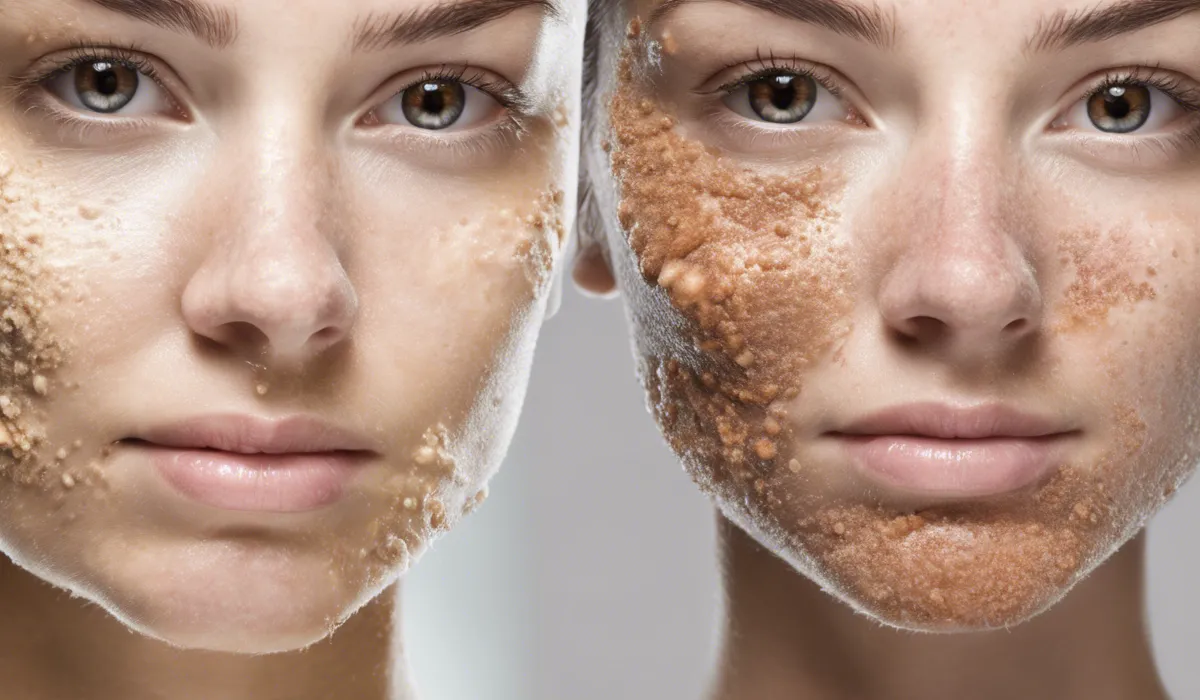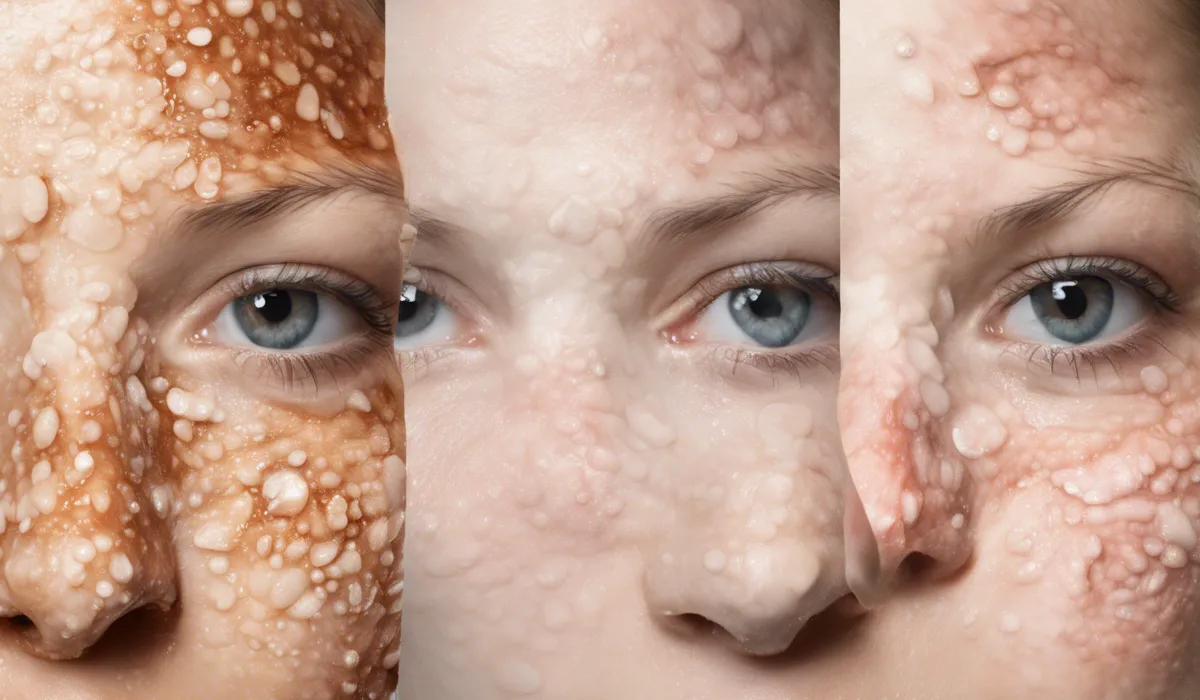Yes, mold can cause skin breakouts. Mold exposure often leads to allergic reactions, which can include skin irritation or dermatitis. Direct contact with mold spores may trigger skin inflammation, resulting in rashes or hives.
Understanding Mold and Its Effects on Skin

What Is Mold?
Mold is a type of fungus that grows in multicellular structures called hyphae.
These tiny organisms thrive in damp, warm environments and can be found in various places such as bathrooms, kitchens, basements, and outdoors in soil and decaying plant matter.
Mold reproduces through spores that travel through the air, which is how they often come into contact with our skin.
Common Mold Types Affecting the Skin
There are several types of mold that can cause reactions in our skin. The most common include Penicillium, Aspergillus, Cladosporium, and Alternaria.
These molds can lead to skin problems when we touch moldy surfaces or when mold spores land on our skin.
Routes of Mold Exposure
Mold exposure occurs when mold spores come in contact with our skin, are inhaled, or ingested.
Direct contact with moldy surfaces or being in environments with high mold spore concentrations can increase the likelihood of exposure and skin reactions.
Skin’s Role as a Protective Barrier
The skin acts as a shield, protecting our bodies from various environmental threats. It’s made up of layers that work to keep irritants out.
However, when mold spores land on the skin, they can sometimes breach this barrier, leading to irritation or allergic responses.
How Mold Can Cause Skin Irritations and Breakouts

Impact of Mold Spores on Skin
When mold spores come into contact with the skin, they can cling to the surface and, in some cases, penetrate the outer layers.
This direct contact may cause the skin to become red, swollen, or itchy, resulting in discomfort and visible irritation.
Allergic Reactions Leading to Dermatitis
Many people are allergic to mold, and when they come into contact with mold spores, their immune system overreacts.
This reaction can lead to a condition known as allergic contact dermatitis, characterized by a red, itchy rash that can cause great discomfort.
Inflammation from Mold and Mycotoxins
Some molds produce toxic substances called mycotoxins. If these toxins come into contact with the skin, they can lead to inflammatory responses, such as rashes and hives, which may exacerbate skin discomfort and irritation.
Mold’s Effect on Eczema and Psoriasis
Individuals with existing skin conditions like eczema or psoriasis might find that mold exposure aggravates their symptoms.
The presence of mold can worsen the inflammation and itching associated with these conditions, leading to increased discomfort and more pronounced breakouts.
Research on Mold-Related Skin Issues
Studies have shown a clear connection between mold exposure and skin problems.
Researchers have documented cases where individuals developed skin conditions as a direct result of mold exposure, highlighting the importance of mold prevention and treatment in maintaining skin health.
Prevention and Treatment of Mold-Induced Skin Problems

Reducing Mold Growth in Your Home
Preventing mold growth is key to avoiding mold-induced skin issues. Keep your home dry and well-ventilated, fix any leaks promptly, and use dehumidifiers in damp areas.
Regular cleaning and reducing indoor humidity levels can also deter mold growth.
Skincare Practices to Ward Off Mold
Good hygiene can help minimize the risk of mold-related skin problems. Bathing regularly, washing clothes and bed linens frequently, and using anti-fungal creams or soaps in high-risk areas can help keep mold at bay.
Knowing When to See a Dermatologist
If you notice persistent skin irritation or suspect a mold-related issue, it’s essential to consult a dermatologist.
They can diagnose the problem accurately and recommend a suitable course of treatment.
Treating Mold-Induced Skin Conditions
Treatment options may include topical creams, oral medications, or light therapy.
It’s crucial to follow the dermatologist’s advice and complete the entire treatment regimen to effectively manage mold-induced skin conditions.
Addressing the Source of Mold
Eliminating the source of mold is essential for preventing future skin breakouts.
This may involve professional mold remediation, regular home inspections, and taking proactive measures to reduce moisture and improve air quality in your living spaces.
FAQs About Mold and Skin Breakouts
Can exposure to mold cause skin problems?
Yes, exposure to mold can lead to skin problems such as irritation, dermatitis, rashes, or hives due to allergic reactions.
Is dermatitis a common reaction to mold?
Yes, dermatitis is one of the common allergic reactions to mold exposure, often manifesting as an itchy rash.
Can touching mold spores cause skin breakouts?
Direct contact with mold spores can trigger skin inflammation and lead to breakouts such as rashes or hives.
Are skin rashes from mold exposure immediate?
Skin rashes from mold exposure can occur immediately or develop over time, depending on an individual’s sensitivity and the level of exposure.
How can I tell if my skin breakout is caused by mold?
To determine if mold is causing your skin breakout, look for a correlation between exposure to moldy environments and the timing of your skin symptoms, or consult a healthcare professional.
Final Thoughts
Mold exposure is known to trigger allergic reactions, including skin irritation or dermatitis. When mold spores come into direct contact with the skin, they can cause inflammation, leading to rashes or hives, and subsequently result in skin breakouts.
